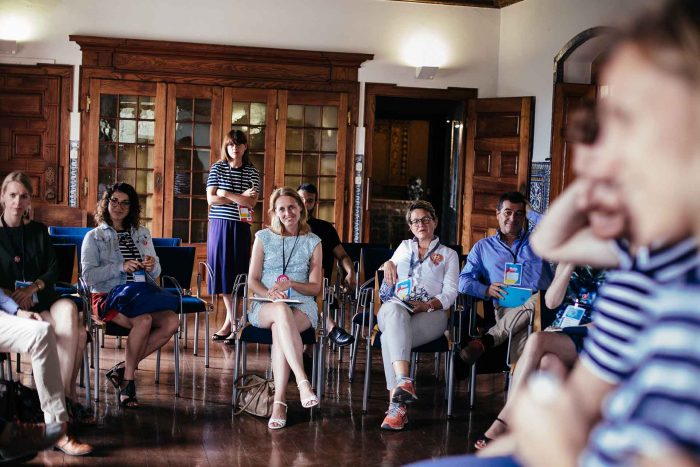Facilitation is the process of learning together.
Facilitation is the set of structured and collaborative activities organized to discover, understand and learn together. The facilitator helps a group of people and decision-makers to face complex problems, producing a collective intelligence more powerful than each individual could do, alone.
Facilitation is different from mentoring, coaching or teaching. It is a two-ways activity in which the facilitator and the participants are co-learner in the process.
“Facilitation” comes from the Latin word “facilis” which means “it can be done”. A “facilitator” is somebody who makes things “doable”, easy for somebody else.
A facilitator is a professional who helps people to organize collective processes. They create the context and the opportunities for creativity and understanding to happen.
In a facilitation workshop, many participants can be invited. Usually from 5 to 20 but you can have dozens or even hundreds of participants. Facilitation helps to remove any obstacle to collaborative thinking and creation. It also sets the pace and the rhythm to promote the participation of all attendees.
During workshops, a lot of different participatory methods can be used. They give structure to the collaborative activities of participants.
A facilitator sets the workshop objectives with the sponsors who hired them. The objectives must be clear to allow an evaluation of the facilitated activities. They also guide the facilitator to set the top priority of this learning experience. The facilitator needs to decide where to work harder and what to remove to make the workshop a success.
Facilitation is a set of structured and collaborative activities organized with an agenda.
The Facilitator’s Role
The facilitator covers several roles:
- a referee,
- a coach,
- and a presenter.
And works in helping, motivating and supporting a group of participants.
Among the goals of a workshop you can find:
- exploring a topic,
- investigating a complex problem,
- gathering different perspectives from different actors,
- earning a better understanding of the context,
- rendering explicit the causes and the relationships behind a concept,
- ideating a set of actions to take to solve the identified problems
- or clarifying and improving the way of collaborating and working together.
Successful facilitation is invisible and easy
One of the best definitions of facilitation emerged while brainstorming the writing of this article: “You made facilitation looks like something so easy to create!” my creative partner told me. And that’s exactly the final goal of facilitation: to make things easy.
As Bruno Munari said “To make things hard is easy, To make things easy is hard.” it is not easy for a facilitator to create a successful facilitation event. And successful facilitation must be easy for participants.
Related Articles
- Facilitation is the process of learning together
- Strategic Design for Collective Intelligence
- Facilitating Collective Intelligence for the Sustainability of Agri-food
- Workshop Design methods, Discovery and Ideation
- Facilitating Complexity Thinking
External Resources

